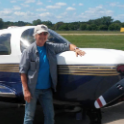M20J vs M20J Takeoff Performance
-
Members Online
- laytonl
- eman1200
- bsuts3
- shawnd
- V1Rotate
- Planejim
- Gilt
- ragedracer1977
- mluvara
- DC_Brasil
- 14Flyboy
- takair
- IvanP
- hais
- Jimmyred
- ziggysanchez
- hammdo
- Rwsavory
- 1980Mooney
- Slick Nick
- redbaron1982
- Falcon Man
- neilpilot
- wood_fly
- ELysek1
- Skyland
- jlunseth
- corn_flake
- raymondscott0321
- DCarlton
- M20F
- KLRDMD
- Boonchuk
- DonMuncy
- pkellercfii
- Andy95W
- PeytonM


Recommended Posts
Join the conversation
You can post now and register later. If you have an account, sign in now to post with your account.